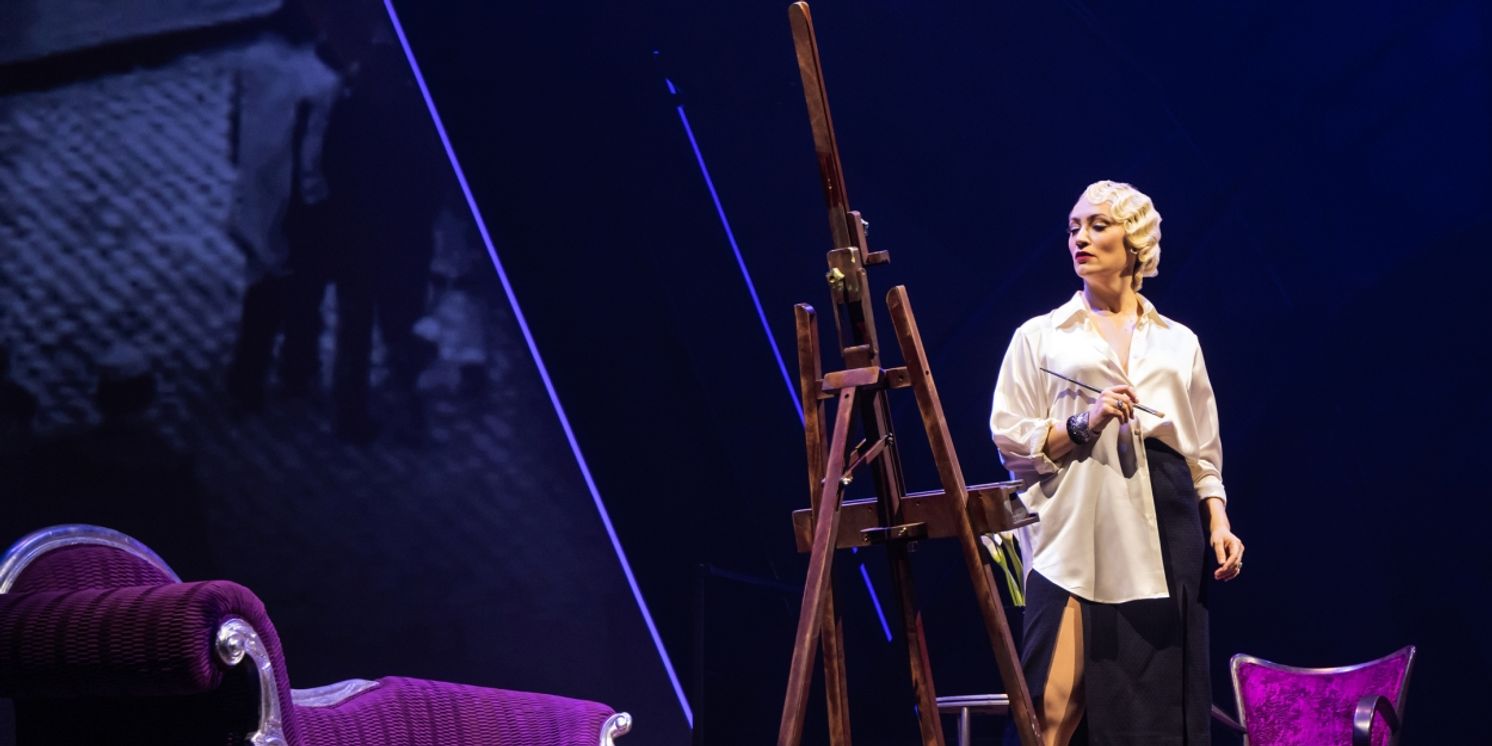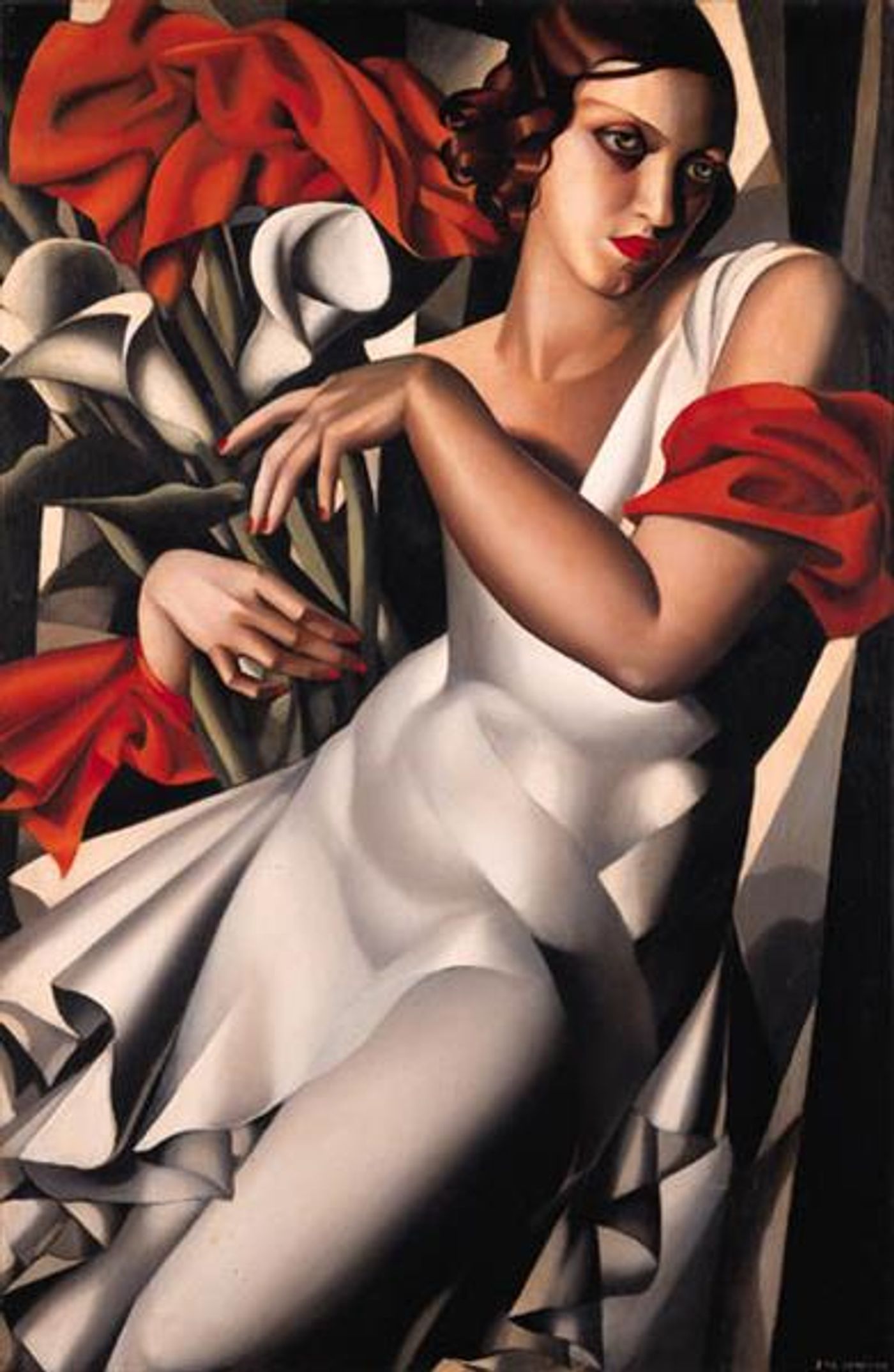Tamara de Lempicka- The Artist You Probably Never Heard Of
Who was the remarkable woman at the center of Lempicka on Broadway? Learn all about her!

The life and works of Tamara de Lempicka come to life on Broadway this weekend. The character at the center of the new musical, opening Sunday, April 14 at the Longacre Theatre, left behind a lasting legacy that continues to inspire and influence generations of artists... but how much do you know about her? Study up below!
Early Life
Tamara de Lempicka was born Tamara Rozalia Gurwik-Górska in 1898 in Warsaw, Poland. She was born into a wealthy and cultured family in the midst of the Belle Époque era- her upbringing exposed her to the world of art and refinement, laying the foundation for her future career. Her idyllic childhood was disrupted by the outbreak of World War I, which forced her family to flee Poland and seek refuge in St. Petersburg, Russia.
It was during her time in Russia that Tamara's passion for art began to blossom. She studied at the prestigious Academy of Fine Arts in St. Petersburg, where she honed her skills and developed her own unique style. However, the turmoil of the Russian Revolution once again uprooted her life, prompting her to flee to Paris in 1918.
Rise to Prominence
Paris in the 1920s was a melting pot of creativity and cultural ferment, providing the perfect backdrop for Tamara de Lempicka to flourish as an artist. Immersed in the vibrant atmosphere of the city, she quickly established herself as a leading figure in the avant-garde art scene. Her distinctive style, characterized by bold colors, sharp lines, and a sense of elegant decadence, set her apart from her contemporaries.
De Lempicka's paintings often depicted glamorous figures from high society, exuding an air of sophistication and sensuality. Her subjects were often portrayed with an aura of confidence and empowerment, reflecting the changing role of women in society during the interwar period. One of her most famous works, "La Belle Rafaëla," epitomizes her signature style, with its sleek lines and evocative portrayal of female beauty.
Her Work
Just a few of her most famous works include:
.jpeg)
.jpg?format=auto&width=1400)

Personal Life
Despite her professional success, Tamara de Lempicka's personal life was marked by tumultuous relationships and upheaval. She married twice and had a daughter, Kizette, but her marriages were fraught with infidelity and instability. Her second husband, Baron Raoul Kuffner, was a wealthy art collector who supported her career but also contributed to her financial woes through his extravagant lifestyle.
The onset of World War II brought further upheaval to de Lempicka's life. Fleeing the Nazi occupation of France, she emigrated to the United States, where she struggled to regain the same level of recognition and success that she had enjoyed in Europe.
Her Legacy
Tamara de Lempicka's legacy extends far beyond her lifetime, cementing her status as one of the most iconic figures of the Art Deco movement. Her work continues to captivate audiences with its timeless elegance and sophistication, serving as a testament to the enduring allure of the Roaring Twenties. In recent years, there has been a resurgence of interest in her art, with exhibitions and retrospectives celebrating her contributions to the world of modernism.
Moreover, de Lempicka's influence can be seen in the work of numerous contemporary artists who have been inspired by her bold aesthetic and independent spirit. Her legacy also extends beyond the realm of art, with her life story serving as a source of inspiration for women seeking to carve out their own paths in a male-dominated world.
In conclusion, Tamara de Lempicka's life and legacy are a testament to the power of art to transcend time and place. Through her distinctive style and unapologetic embrace of glamour, she captured the essence of an era and left behind a body of work that continues to inspire and captivate audiences around the world. Her story serves as a reminder of the enduring power of creativity to endure in the face of adversity and upheaval, leaving an indelible mark on the world.
Powered by
|
Videos




